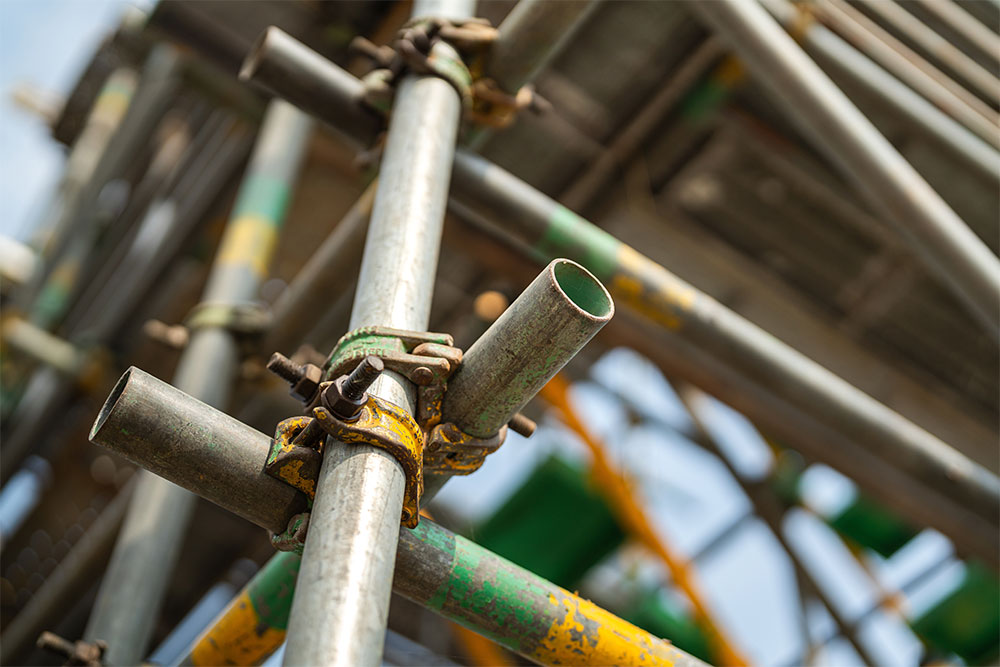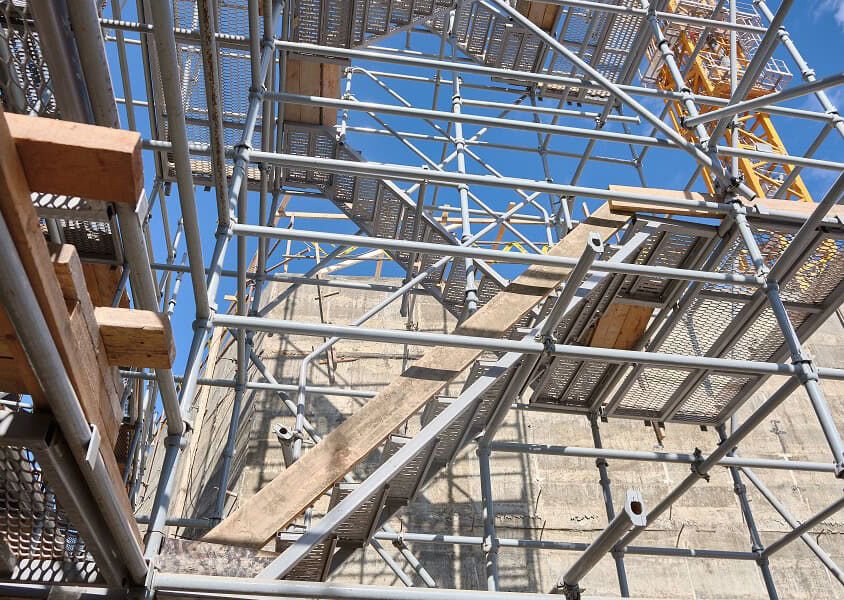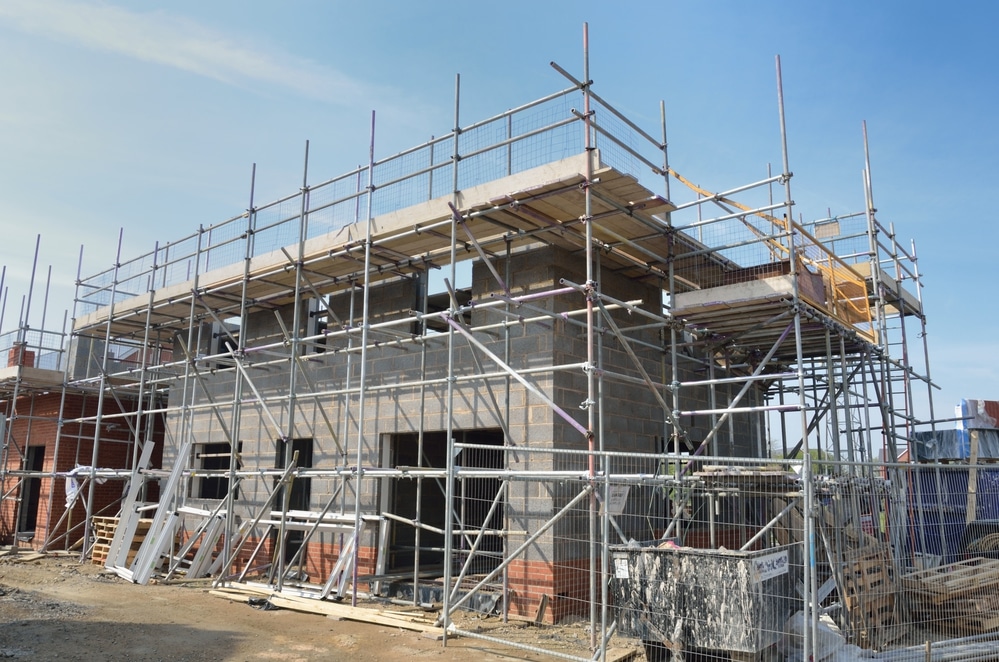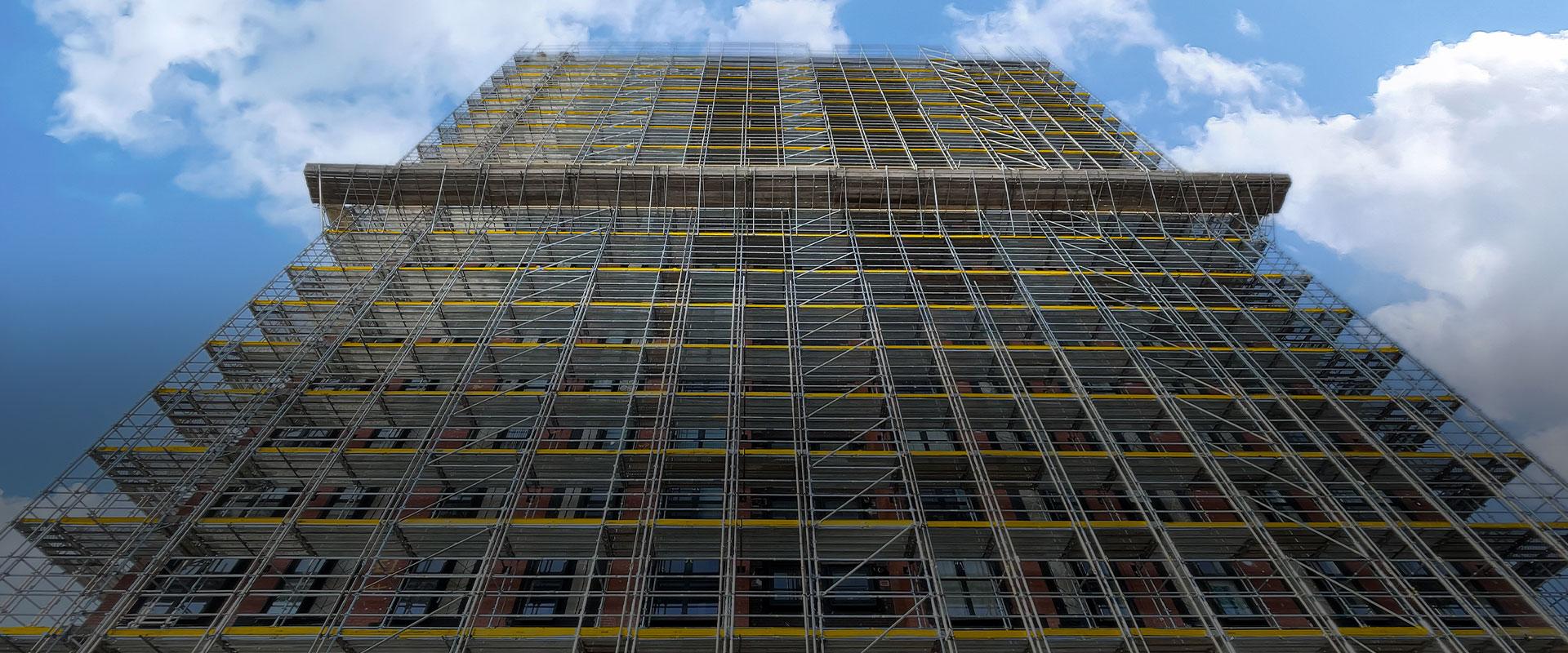Scaffolding Guildford: The Best Option for Your Building and Renovation Projects
Scaffolding Guildford: The Best Option for Your Building and Renovation Projects
Blog Article
Exploring the Different Sorts Of Scaffolding Utilized in Building Projects
The building and construction market counts greatly on various kinds of scaffolding to meet certain job demands, each offering unique benefits and applications. Standard frame scaffolding supplies a strong structure for general tasks, while put on hold scaffolding is important for work on skyscraper structures.

Standard Structure Scaffolding
Traditional structure scaffolding is just one of one of the most widely utilized approaches in the construction sector because of its robustness and versatility. This system consists of straight and upright frames that are put together to produce a stable system for workers and materials. The primary components consist of upright articles, straight journals, and angled dental braces, which with each other offer a solid structure that can support significant loads.
One of the essential advantages of standard frame scaffolding is its adaptability to numerous building projects, varying from household structures to large industrial structures. The modular style allows for easy setting up and disassembly, making it reliable for both long-term and temporary tasks. Additionally, the system can be customized in elevation and width, fitting various building styles and site conditions.
Safety and security is critical in scaffolding applications, and typical structure systems are outfitted with guardrails and toe boards to avoid falls and make certain employee protection. Moreover, regular examinations and adherence to safety guidelines are vital in maintaining the stability of the scaffold. On the whole, standard frame scaffolding continues to be a fundamental selection in the building sector, supplying a reputable platform for labor and enhancing overall project efficiency

Suspended Scaffolding
Suspended scaffolding offers an one-of-a-kind remedy for building and construction tasks that call for access to elevated surfaces, specifically in scenarios where traditional framework scaffolding may be impractical. This sort of scaffolding is commonly suspended from the roofing or upper levels of a framework, making use of a system of ropes, systems, and pulley-blocks to produce a functioning room that can be gotten used to different elevations.
One of the primary advantages of put on hold scaffolding is its versatility. It can be easily repositioned or reduced to fit modifications in building requirements, making it suitable for tasks such as window setup, frontage work, and maintenance on high-rise buildings. Furthermore, the very little impact of put on hold scaffolding allows for far better use ground space in metropolitan settings, where space is frequently limited.
Security is a vital consideration in the use of put on hold scaffolding. Overall, suspended scaffolding provides a reliable and efficient solution for accessing hard-to-reach locations in various building and construction situations, enhancing both efficiency and safety and security on website.
System Scaffolding
System scaffolding, often considered a modern service in the scaffolding industry, contains pre-engineered parts that can be promptly put together and adjusted for numerous construction projects. Scaffolding. This sort of scaffolding is characterized by its modular design, which allows for adaptability and effectiveness on task websites, fitting architectural demands and different heights
Commonly made from high-strength steel or light weight aluminum, system scaffolding offers improved resilience and stability. The components consist of vertical posts, straight journals, and angled braces, which adjoin securely, ensuring a durable structure. The style typically integrates standard installations, streamlining assembly and disassembly procedures, therefore reducing labor time and prices.

Rolling Scaffolding
Rolling scaffolding is a versatile alternative to traditional set scaffolding, created for wheelchair and convenience of usage on building and construction websites. This type of scaffolding includes a platform sustained by structures with wheels, enabling employees to quickly transfer it as needed. The movement feature considerably enhances performance, as it decreases downtime connected with disassembling and assembling fixed scaffolding.
Typically created from light-weight products such as light weight aluminum or steel, rolling scaffolding provides a tough yet mobile option for projects calling for frequent repositioning - Scaffolding. It is especially beneficial in jobs such as paint, drywall setup, and electric job, where access to numerous elevations and places is essential
Security is critical in rolling scaffolding design, with features such as locking wheels to stop unplanned activity when in use, and guardrails to secure workers from falls. Additionally, several versions are adjustable in height, accommodating various task needs.
Cantilever Scaffolding

The design of cantilever scaffolding commonly includes utilizing brackets or arms secured to a structure or structure, allowing the platform to expand outside securely. Safety and security is critical; therefore, these scaffolds have to be crafted to withstand various lots and environmental conditions. Regular inspection and go now upkeep are vital to make sure structural integrity and worker security.
Cantilever scaffolding is favored for its versatility and efficient use space, making it a preferred option in metropolitan atmospheres where area constraints prevail. It helps with simpler accessibility to high elevations, eventually contributing to the general efficiency of building tasks. Similar to all scaffolding types, appropriate training and adherence to security standards are scaffold tagging system essential for workers using cantilever scaffolding.
Verdict
To conclude, the diverse kinds of scaffolding used in construction tasks each serve unique objectives customized to details website needs. Traditional structure scaffolding gives security, while suspended scaffolding provides convenience for raised tasks. System scaffolding promotes quick assembly, and rolling scaffolding improves flexibility for varying work atmospheres. Cantilever scaffolding successfully deals with barriers in metropolitan settings. Understanding these scaffolding types is necessary for enhancing security and performance in building and construction, eventually adding to the successful conclusion of tasks.
Typical structure scaffolding provides a sturdy structure for general tasks, while suspended scaffolding is essential for job on skyscraper frameworks.Rolling scaffolding is a flexible option to typical set scaffolding, made for movement and convenience of use on building and construction websites. As with all scaffolding types, proper training and adherence to safety and security criteria are essential for employees utilizing cantilever scaffolding.
Conventional frame scaffolding offers security, while suspended scaffolding supplies convenience for raised tasks. System scaffolding promotes quick assembly, and rolling scaffolding boosts flexibility for differing job atmospheres.
Report this page